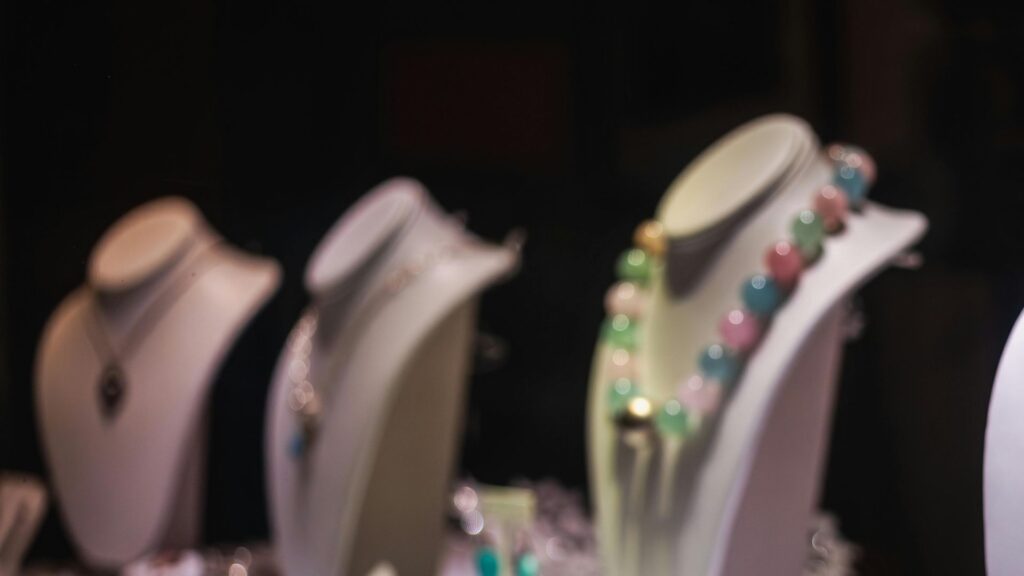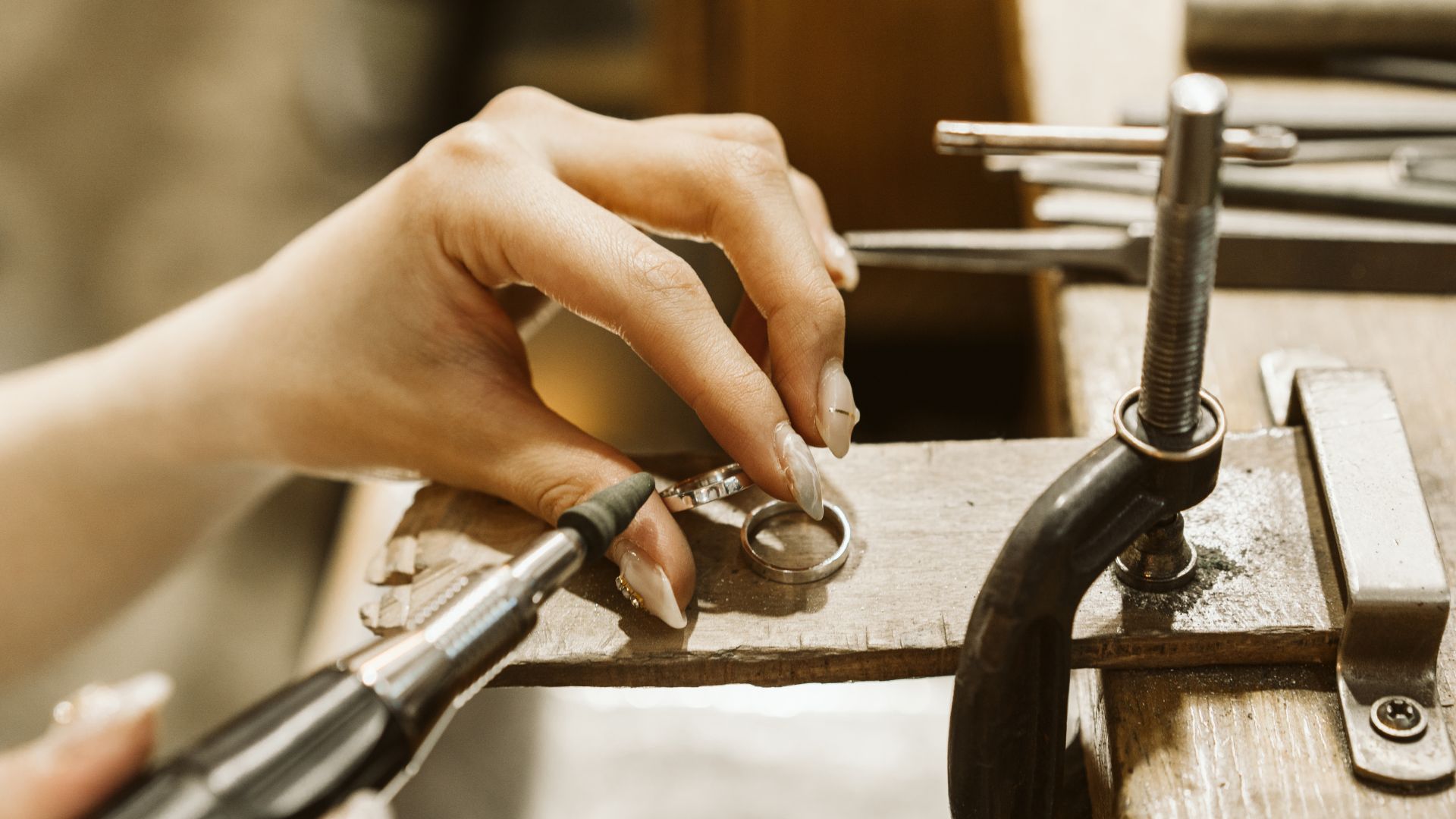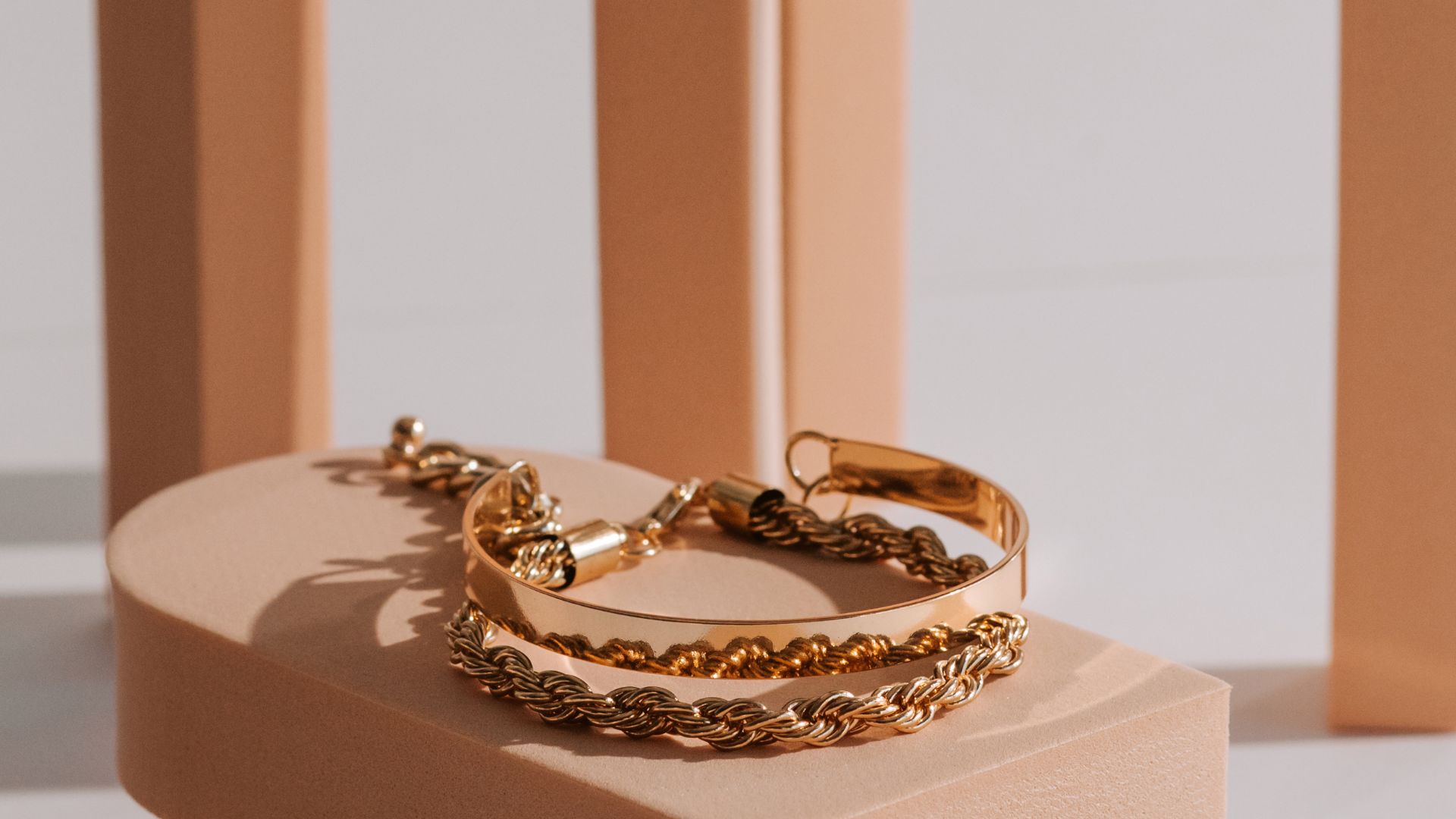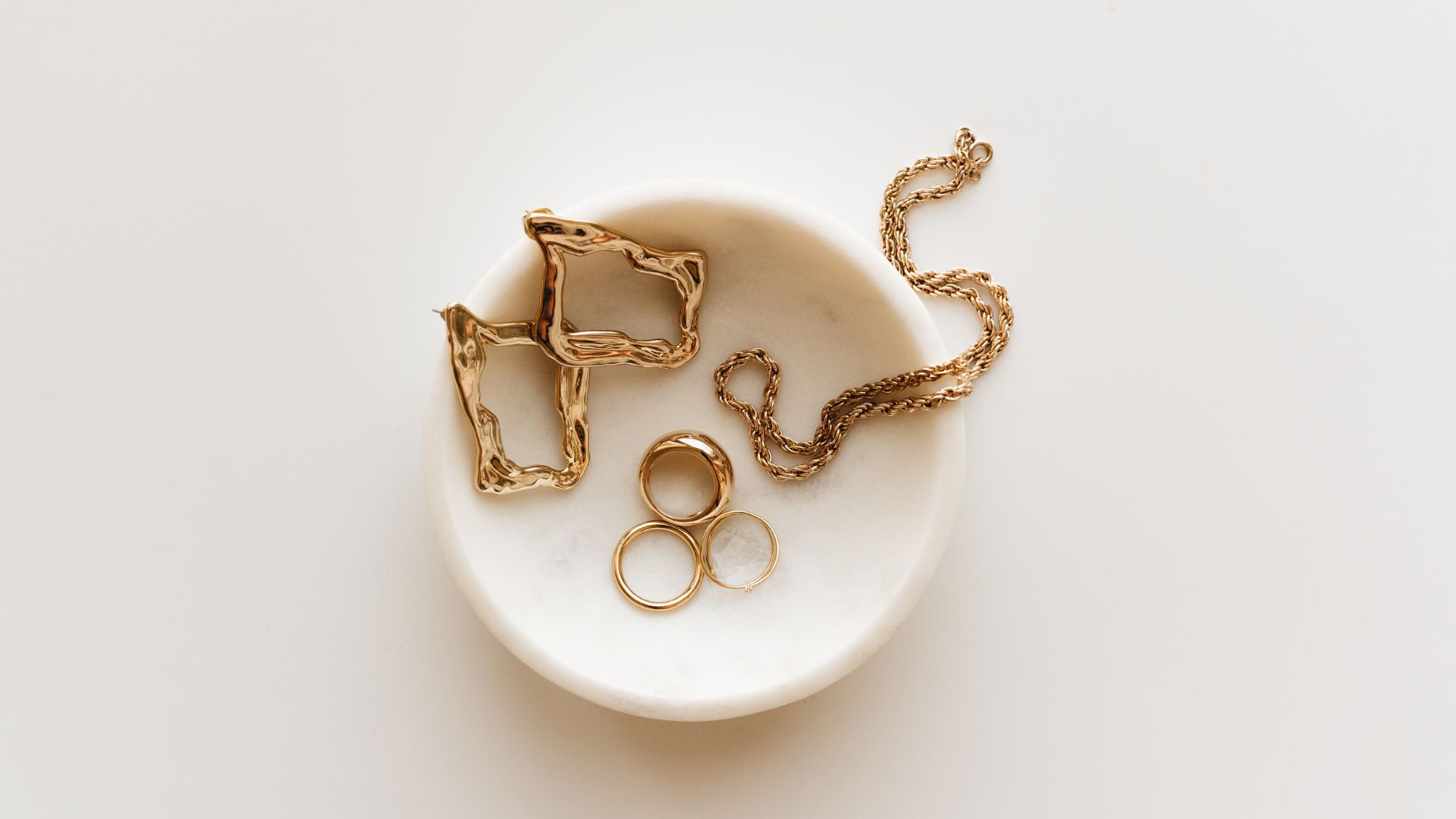
Goldsmithing vs. silversmithing: What’s the difference?
Goldsmithing and silversmithing are two of the oldest and most respected crafts in the jewellery-making industry. Both require a keen eye for detail, technical expertise, and an appreciation for the beauty of precious metals. However, despite their similarities, there are key differences between the two. The materials used, the techniques employed, and the demand in the jewellery market all shape how goldsmiths and silversmiths approach their work.
In this article, we’ll explore the differences and similarities between goldsmithing and silversmithing, shedding light on the unique qualities of each craft:
- Materials: Gold vs. silver and their properties
- Techniques: Similarities and differences
- Industry demand: Trends in the demand for gold vs. silver jewelry
- How both goldsmithing and silversmithing play important roles in the jewelry industry

Materials: Gold vs. silver and their properties
One of the most fundamental differences between goldsmithing and silversmithing lies in the materials used: gold and silver. These metals each have their own properties that influence how they are worked and what they’re best suited for in jewellery making.
Gold alloys
Gold is a relatively soft metal, which makes it easy to shape and mould. In its pure form (24K), gold is particularly malleable, meaning it can be easily bent, hammered, and worked into intricate designs. However, pure gold is also quite soft, which is why it’s often alloyed with other metals like copper, silver, or palladium to increase its strength and durability.
The most common alloys used in gold jewellery are 14K, 18K, and 22K, each offering a different balance of purity and durability. Gold’s natural colour, which can range from bright yellow to a richer, deeper tone, is highly sought after, and it doesn’t tarnish easily, making it a long-lasting option for fine jewellery.
Silver alloys
Silver, on the other hand, is a more abundant metal and is less expensive than gold. Like gold, it is malleable, but it’s typically harder than pure gold. The most common form of silver used in jewellery making is sterling silver, which is 92.5% pure silver mixed with 7.5% of another metal, usually copper, to improve its durability. Sterling silver is still relatively soft compared to other metals, but it’s much stronger than gold in its pure form.
One key difference between gold and silver is that silver is prone to tarnishing over time due to its reaction with sulfur in the air. This means silver jewellery requires regular cleaning and maintenance to keep it looking its best. However, silver’s bright, white lustre makes it an appealing choice for many, particularly in more contemporary or minimalist designs.

Techniques: Similarities and differences
Both goldsmithing and silversmithing require similar foundational techniques, but the properties of gold and silver can influence how these techniques are applied.
Similarities
Casting: Both goldsmiths and silversmiths use casting techniques to create intricate shapes or complex designs. The lost-wax casting method is popular for both gold and silver jewellery, where a model is made in wax, covered in a mould, and then melted away to leave a cavity for molten metal.
Soldering: Soldering is essential in both crafts, as it involves melting a filler metal (solder) to join two pieces of metal together. Goldsmiths and silversmiths alike use heat sources like torches to apply solder, and the process requires great precision to avoid damaging the base metal.
Engraving and Stone Setting: Both goldsmiths and silversmiths can use engraving tools to add fine details or personalise a piece of jewellery. Additionally, both crafts involve stone setting, where gemstones are set into metal by securing them in prongs, bezels, or other settings.
Differences
Workability: The softer nature of gold allows goldsmiths to create more delicate and detailed pieces with greater ease, while silversmiths often work with slightly tougher material. This can affect the types of designs each craft is suited for. Goldsmiths can create intricate, delicate patterns, while silversmiths may focus on more solid, durable pieces.
Alloying: While both metals are alloyed to improve their properties, the types of alloys used and their effect on the final piece differ. Gold is often alloyed with copper, silver, or platinum to create different hues (yellow, white, and rose gold), while silver is primarily alloyed with copper to create sterling silver.
Industry demand: Trends in the demand for gold vs. silver jewelry
The demand for gold and silver jewellery can vary based on trends, economic factors, and cultural influences. Both metals are highly valued, but their popularity can fluctuate.
Gold has long been associated with luxury, status, and wealth, and it continues to be in high demand for fine jewellery. Many people prefer gold for engagement rings, wedding bands, and heirloom pieces due to its timeless appeal and durability. The rise of “ethical” and “sustainable” jewellery has also increased the demand for responsibly sourced gold, especially in the form of recycled gold.
Gold is also a safe investment during times of economic uncertainty, as it retains its value. This is particularly true in regions like Asia, where gold has cultural significance. The demand for gold jewellery tends to be higher during times of economic stability or growth, as it is seen as a symbol of prosperity.
Silver, while still highly valued, is often considered more accessible than gold. Silver jewellery is more affordable, which makes it popular among younger buyers and those seeking trendy, fashionable pieces at a lower price point. The affordability and versatility of silver also make it a go-to material for costume jewellery, with silver designs catering to a broader audience.
Despite its lower price point, silver is still widely regarded for its beauty and has seen a resurgence in popularity in recent years, especially in contemporary designs. Silver jewellery is often favoured for minimalist styles, modern pieces, and bold statement designs.
How both goldsmithing and silversmithing play important roles in the jewelry industry
Goldsmithing and silversmithing each offer unique contributions to the jewellery industry, and both crafts have their place in the world of fine jewellery. While goldsmithing is often associated with luxury, exclusivity, and timeless designs, silversmithing offers an affordable, versatile alternative that appeals to a wide range of consumers. Both crafts require skill, precision, and an eye for detail, whether working with gold’s malleable properties or silver’s durability.
Let’s recap today’s article:
- Gold and silver have different properties—gold is soft and malleable, while silver is more durable but prone to tarnishing. Gold is often alloyed with copper or palladium, and silver is commonly alloyed with copper to create sterling silver.
- Both goldsmithing and silversmithing use techniques like casting, soldering, engraving, and stone setting, but gold’s softness allows for more intricate and delicate designs, while silver is often worked into more solid, durable pieces.
- Gold is alloyed for colour variations (yellow, white, rose), while silver is typically alloyed with copper to create sterling silver, affecting both the material’s look and durability.
- Gold is highly sought after for its luxury and investment value, especially for fine jewellery, while silver is more affordable and appeals to a wider audience, often for trendy or minimalist pieces.
- Both goldsmithing and silversmithing play vital roles in jewellery-making, offering different aesthetic qualities and value propositions, with gold associated with luxury and silver prized for its versatility and affordability.
Ultimately, the choice between gold and silver jewellery comes down to personal preference, design vision, and budget. Whether it’s the warmth and elegance of gold or the bright shine and affordability of silver, both materials continue to captivate jewellery lovers and collectors around the world. Goldsmithing and silversmithing will always remain essential to the craft of jewellery-making, each shaping the industry in its own unique way.


